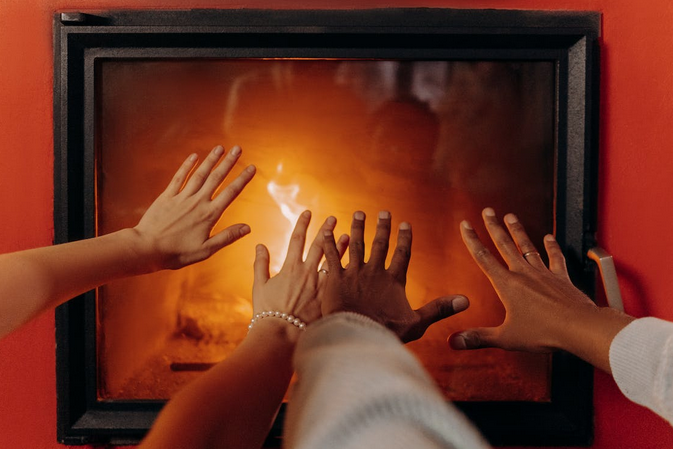
Fireplaces hold a special place in our homes, creating a cozy and inviting ambiance during colder months. However, they can also be an efficient source of heat when utilized correctly. In this guide, we will explore four key factors to efficiently heat your home with fireplaces, allowing you to enjoy both warmth and comfort while keeping energy costs under control.
Proper Insulation and Sealing
 Prior to using your fireplace for heating purposes, ensure that your home is properly insulated and sealed. Good insulation prevents heat loss and keeps the warm air from escaping through cracks or poorly insulated areas. Check for gaps around windows and doors and seal them accordingly. Adequate insulation in walls and attics also helps to retain the heat generated by the fireplace, maximizing its efficiency.
Prior to using your fireplace for heating purposes, ensure that your home is properly insulated and sealed. Good insulation prevents heat loss and keeps the warm air from escaping through cracks or poorly insulated areas. Check for gaps around windows and doors and seal them accordingly. Adequate insulation in walls and attics also helps to retain the heat generated by the fireplace, maximizing its efficiency.
Fireplace Efficiency and Upgrades
If you currently have a traditional wood-burning fireplace, consider upgrading it to a more efficient model. Modern fireplace inserts or wood stoves are designed to generate and distribute heat more effectively throughout the room. These options often include blowers or fans that circulate warm air, maximizing the fireplace’s efficiency. Additionally, they have air controls that allow you to adjust the burn rate, ensuring optimal heat output while minimizing fuel consumption.

Fuel Sources and Seasoned Wood
The choice of fuel for your fireplace significantly impacts its efficiency. Seasoned hardwood is the best option for producing consistent heat output while minimizing smoke and creosote buildup. Avoid burning green or unseasoned wood, as it releases less heat and produces more smoke. Alternatively, you can opt for cleaner-burning options such as natural gas or propane fireplaces, which offer convenience and efficiency without the need for wood storage and maintenance.
Zone Heating and Supplemental Heat
 To make the most of your fireplace’s heating capabilities, consider using zone heating techniques. Instead of relying solely on a centralized heating system, use your fireplace to heat commonly occupied areas, such as the living room or bedroom, while lowering the thermostat for the rest of the house. This allows you to focus heat where it’s needed, reducing energy consumption and overall heating costs. Remember to use appropriate safety measures when operating a fireplace and ensure proper ventilation to maintain indoor air quality.
To make the most of your fireplace’s heating capabilities, consider using zone heating techniques. Instead of relying solely on a centralized heating system, use your fireplace to heat commonly occupied areas, such as the living room or bedroom, while lowering the thermostat for the rest of the house. This allows you to focus heat where it’s needed, reducing energy consumption and overall heating costs. Remember to use appropriate safety measures when operating a fireplace and ensure proper ventilation to maintain indoor air quality.
Efficiently heating your home with fireplaces requires careful consideration of factors such as insulation and sealing, fireplace efficiency, fuel sources and seasoned wood, and implementing zone heating techniques. By optimizing these factors, you can enjoy the warmth and comfort provided by a fireplace while minimizing energy costs. Remember to prioritize safety measures and consult professionals if you are considering upgrades or modifications.


